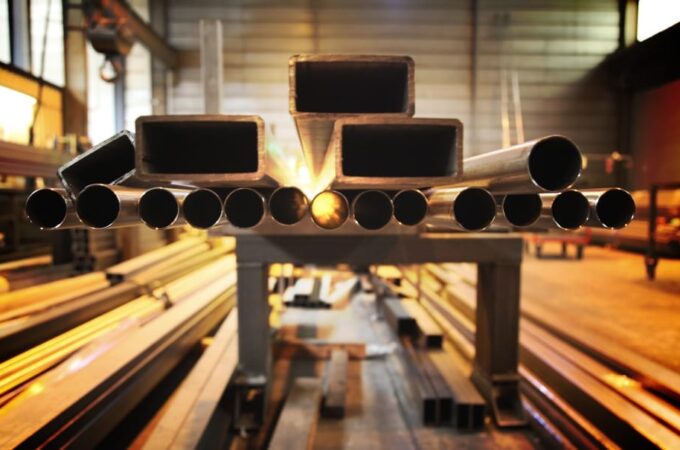
How To Prevent Workplace Injuries In Your Business
Workplace injuries are incredibly common across all industries, and should all be treated with the same amount of severity and care, regardless of whether your employee falls on a rogue box or if a machine causes injury. As frequent as they are, work-related injuries can be prevented by implementing extensive safety plans and educating your employees on the processes they should follow.
This article will detail some different ways you can prevent work-related injuries in your business, and keep the health and safety of your employees safe.
What counts as a workplace injury?
A workplace injury is defined as an occurrence of an employee suddenly or unexpectedly becoming physically or mentally unwell while performing their duties. Workplace injuries can happen on the employer’s premises or off-site if your employees need to travel to work elsewhere. They only include immediate accidents or illnesses and don’t involve illnesses, whether they be physical or mental, that develops after several years.
Occupational disease
Occupational diseases are illnesses that develop years after initial exposure. For example, if an employee is in frequent presence of asbestos and is diagnosed with a related illness after several years, their illness would be classed as an occupational disease.
An easy way to distinguish between workplace injury and occupational disease is to consider certain eventualities. For example, if an employee strains their back lifting a heavy box, they have experienced work-related injuries. But if an employee develops an aching back after several years of lifting heavy objects, this is an occupational disease.
This may seem minute, but it is a very important legal distinction for businesses if an employee decides to pursue a case against you.
If you become aware that an employee has developed a health issue after years of exposure to the same circumstances, there isn’t much that you can do besides offer support. However, you can make a difference by targeting the sources of the problems your business faces, and ensuring that nobody else develops the same issues in the future.
How to prevent workplace injuries
The issues that your workplace may be facing will depend on the industry you’re in. If your business is based in an office with no warehouse facilities, it won’t be necessary to provide forklift training. But your employees can sustain injuries, even in the safest work environments. This compilation of tips will be integral to ensuring that your business can prevent as many workplace injuries as possible.
- Implement a safety and wellness plan
This plan should be as extensive as possible to ensure there’s no confusion regarding certain practices your employees need to follow. You should communicate with your employees through training sessions to inform them of how to behave in situations that could be dangerous if not taken seriously.
You should also encourage your employees to report any dangerous behaviour directly to you. This can quickly evolve into tattle-tales, though, so you should be sure to have a supply of working security cameras dotted around the premises to verify the claims. If you do find the accusation of irresponsible behaviour to be true, you need to be firm and unhesitant in politely confronting your employees and conducting training sessions to remind your employees of the codes of conduct.
Your meetings can include recountings of your expectations as an employer and an equal discussion of things your employees should be doing, and the things they shouldn’t. Highlighting cutting corners is always a great idea to ensure that your employees know what they can safely get away with and what will put them in danger.
A method of reminding your employees of the safety practises without conducting constant corrective meetings is to have copies of the rules posted around your premises. This way, your employees have something to reference at their leisure.
- Lay non-slip floor paint
Non-slip floor paint can be a great method to ensure your employees are safe in workplaces with frequent slip hazards. Non-slip paint uses aggregate and resin to create a highly durable and textured surface that makes slipping very difficult.
- Provide your employees with good equipment
Work-related injuries don’t always relate to just lifting heavy items or falling on rogue equipment. Sometimes, workplace injuries come in the form of sitting for prolonged periods in poorly built desk chairs. You may not have considered just how important desk chairs can be in maintaining the well-being of your employees.
The best option when it comes to desk chairs is high-quality ergonomic office chairs. Thanks to their innovative, and physiotherapist-approved design, ergonomic office chairs are proven to reduce the severity and number of musculoskeletal disorders in office workers. Bad posture, discomfort, and developing strains due to sitting for long periods can have an adverse effect on the productivity and mood of your employees. By providing your employees with ergonomic office chairs, you will find that they are happier, healthier, and more productive throughout each day and that the rate of workplace injuries in your company decreases.
- Conduct risk assessments & report accidents
Conducting risk assessments and reporting accidents are the best ways to prevent work-related injuries. By doing the preliminary risk assessments, you may identify issues in your workplace that could result in a work-related injury. Whereas the following accident reports may bring a problem to your attention that you may have missed in the risk assessment process.
Your employees should feel safe at work, not as though they’re quietly treading on eggshells. Making it known to your employees that you are reviewing their concerns and taking steps to prevent the likelihood of a workplace injury will not only boost the morale of your employees but keep them safe at the same time.
Risk assessments don’t simply include surveying your premises and noting the things you think could be improved on. It includes safety tests of the equipment you use to ensure that it is up-to-scratch and functioning as it should, including each plug socket and appliance on the premises.
Your accident book is your key to identifying trends in injury and addressing the problems. For example, if 5 employees trip down the stairs because one step is slightly higher than it should be, you should address the problem to prevent the injury from happening again.





